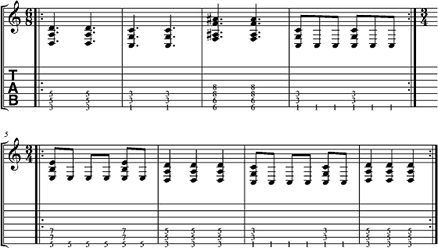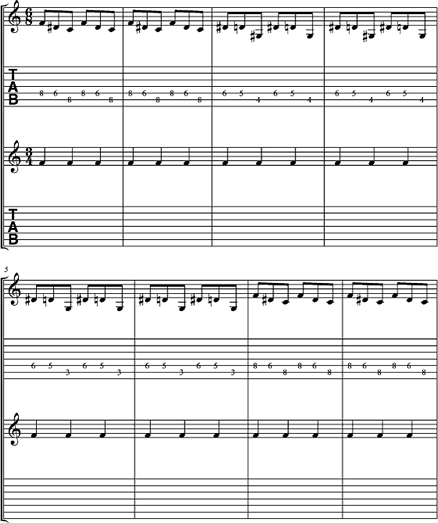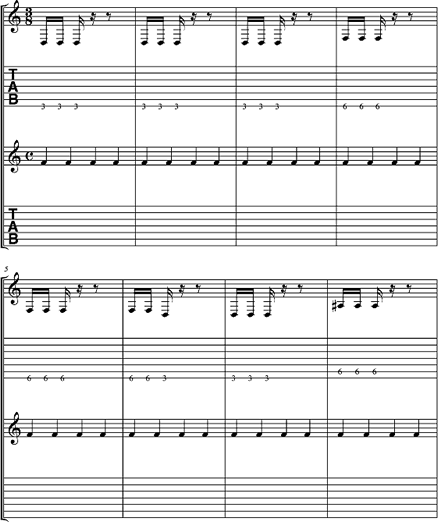Understanding Meter and its Application Part II
SAME NUMBER OF NOTES, BUT A DIFFERENT METER?
With certain meters, it is simply more appropriate to label a time signature a certain way. The most common and obvious example of this would be a 6/8 meter vs. a 3/4 meter. Both have the same number of eighth notes, however, these two meters have very different sounds and a very different feel. Listen to the following example. The exact same thing will be performed, however, it will change from a 6/8 feel to a 3/4 feel.

Notice how the 6/8 meter has its eighth notes grouped as groups of 3 while the 3/4 has its eighth notes grouped as groups of 2.
Naming particular meter comes down to three things. One, how many notes are in each measure and two, the feel of the meter and three, what will make it easiest for the performer to understand, interpret, and visualize on paper.
POLYRHYTHM AND POLYMETER
A polyrhythm is when two or more performers are playing the same time signature, but are playing different groupings/rhythms within that time signature. For example, if playing all eighth notes in 4/4 time, one guitarist could be playing 2+2+2+2 while the other could be playing 3+3+2.
This example is in 3/4 and has the rhythm parts performing 2+2+2 while the guitars are playing 3+3. (Note that the 3/4 meter is simple notated to show the accented beats of all instruments other than guitar and not notated to show pitch.)

A polymeter is when two or more performers are playing different time signatures. For example, one guitarist could be playing in 4/4 while the drummer could be playing in 9/8. This is a great way to build massive amounts of tension in your song writing.
This example has the guitars, bass and lower body of the drummer performing in a 3/8 meter while the synth and upper body of the drummer is performing in a 4/4 meter. (Note that the 4/4 meter is simple notated to show the accented beats of all instruments other than guitar and not notated to how pitch.)

When changing meters every measure, a good amount of tension will occur. For this example, there are four measures and each is a new time signature. The tension is built because it does not have a steady groove or rhythm to it. For this example, we will use 4/4, 3/4, 7/8, and 6/8 for our meters.
Now, when it comes to applying multiple types of meter, the meters could fall under two broad categories. One is simply using meter to create a dramatic effect while the other is used to create a greater amount of tension.

Click here to return to the full list of Zack's articles.
